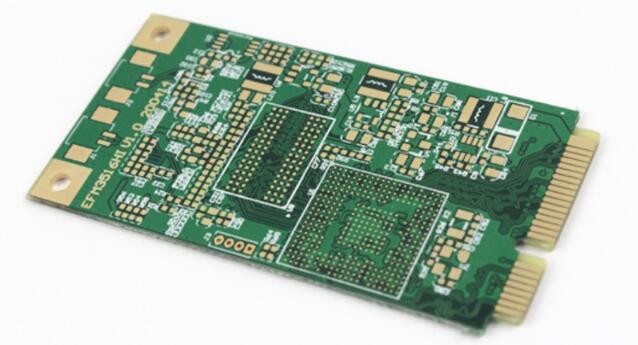Nowadays, more and more electronic products and communication industries basically use HDI PCB circuit boards. What is HDI circuit board? HDI (high density interconnect) board is a high-density interconnect board that is easy to understand. It is a high-density circuit board that uses micro-blind via technology. It is a process that includes internal circuits and external circuits, and then realizes the connection function between the internal components of each layer of the circuit by drilling and metalizing the holes. Customized HDI is common with microvias, buried vias, and blind vias.
Micro-holes: In printed circuit board, holes with a diameter of less than 6 mm (150 microns) are called micro-holes.
Buried hole: Buried through hole is invisible in the finished product. It is mainly used to conduct the inner line, which can reduce the probability of signal interference and maintain the continuity of the characteristic impedance of the transmission line. Since the buried hole does not occupy the surface area of the PCB circuit board, more components can be placed on the PCB surface, thereby reducing the occupied area.
Blind holes: through holes that connect the surface layer and the inner layer without penetrating the entire page.

With the development of electronic products in the direction of high density and high precision, the same requirements have been put forward for PCB circuit boards. The most effective way to increase PCB density is to reduce the number of through holes, and accurately set blind and buried holes to meet this requirement, so as to produce HDI boards. The HDI circuit board not only reduces the production area, but also the signal and electrical performance are relatively stable.
1. The problem of the degree of coincidence between layers in the manufacture of blind and buried multi-layer printed circuit boards
Using the pin front positioning system of ordinary multi-layer printed board production, the graphic production of each layer and single chip is unified into a positioning system, creating conditions for the realization of successful manufacturing. For the ultra-thick single chip used this time, if the board thickness reaches 2 mm, a certain thickness layer can be milled at the location of the positioning hole, and it is also attributed to the processing of the four-slot positioning hole punching equipment of the front positioning system Ability.
2. Glue flow on the board surface after lamination
In view of the characteristics of this blind and buried via multilayer printed circuit board manufacturing, using the process selected in this manufacturing research, it is inevitable that there will be glue flow on both sides of the board after lamination. In order to ensure the graphics transfer accuracy of the following processes and the bonding force requirements of electroplating, manual methods are required to remove the glue on the board surface. This process is relatively difficult and brings inconvenience to the operator. For this reason, when laminating the board, we selected two materials as the release isolation material, one is the currently used polyester film, and the other is the PTFE film. After comparative experiments, the results show that the surface flow of the laminate using PTFE film as the release isolation material is significantly better than that of the laminate using polyester film as the release isolation material. This also provides a reference for solving such problems in the future.
3. Position accuracy and coincidence problem of graphics transfer
As we all know, according to the common practice in the industry, in the manufacturing process of the blind and buried multi-layer printed circuit board, for the production of each inner layer pattern, we use the silver salt stencil, which is compared with the single positioning hole punching. Consistent four-slot positioning holes for graphics transfer. In view of the fact that before each inner layer graphics are transferred and produced, each inner layer board is made by numerical control drilling and hole metallization, so there is a protection problem of a four-slot positioning hole. In addition, after the lamination is completed, when the outer layer graphics are transferred, the following methods can usually be used:
A. The diazo film template copied by the silver salt film template is conventionally used, and the two sides are separately aligned;
B. Using the original silver salt sheet template, positioning the plate according to the four-slot positioning hole;
C. When making the template, while designing the four-slot positioning hole, design two positioning holes outside the effective area of the graphics. Then when the outer layer pattern is transferred, the outer layer pattern is positioned and manufactured through the two positioning holes.
The above three methods have their pros and cons. In order to ensure the degree of overlap between layers, some have the problem of protecting the four-slot positioning holes at different stages during the manufacturing process; some have problems with the concentricity of the two-sided graphics after the center is milled during the milling process; some have the layer The asymmetry of the center of the graphics on both sides caused by the pressure factor and the borehole offset.